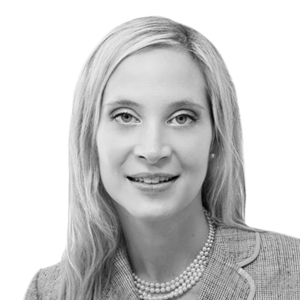
Governance Surveys

New Collars, Hivemind Investors, and Other Stakeholders Have Changed the Business Landscape: What Boards Should Know
The disruption of the last two years has transformed consumers and employees. They’ve emerged from the pandemic far more digitally savvy, focused on self-improvement, and eager to work remotely at least some of the time. They also expect companies to do more, whether it’s providing opportunities for advancement or addressing climate change.
The Oliver Wyman Forum surveyed more than 100,000 people across 10 countries over the last 15 months, which unearthed eight burgeoning consumer and employee personas that are at the forefront of several macro disruptions that the world is experiencing today, from the way people work, travel, and shop to the way that we invest, entertain, and even perceive reality. Accounting for almost 60 percent of the adult population, these personas either represent brand new mind-sets or have changed so much during the pandemic that they are barely recognizable compared to their former selves. They are as follows:
-
Citizens of the Metaverse, who are embracing augmented reality;
-
New Collars, blue-collar workers who have learned new skills and are demanding better pay;
-
Hivemind Investors, whose financial decisions are influenced by social media;
-
Virtual Natives, or white-collar employees with their sights set on remote work;
-
Psychedelic Explorers, who are encouraging the growth of alternative medicine companies;
-
Wellness Protagonists, who champion technology-enabled self-care;
-
Digital Bloomers, whose digital skills flourished during the pandemic; and
-
Climate Catalysts, who are willing to abandon brands that don’t address the environment.
Companies have a choice. They can respond to individuals’ changed needs and behaviors, or they can risk losing more talent and missing opportunities to provide consumers with the services and products they seek.
What Workers Want
The trauma and isolation of the pandemic led people to reevaluate their priorities. Many also grew accustomed to working remotely. Some lost jobs, while others had to put themselves and loved ones at risk while clocking hours in person. US Bureau of Labor Statistics data found that as the Great Resignation rages, more than 20 percent of employed workers in the United States have already quit their jobs; according to the Oliver Wyman Forum survey, another 30 percent of workers studied plan to leave.
“New Collars,” one such impacted group, are moving forward. Many of these former blue-collar workers responded to layoffs and the dangers they experienced while being exposed to COVID-19 by learning additional skills. More than 20 percent of the people in this group have transitioned to a new position, and about half of these workers are now in traditional white-collar fields, such as software or information technology and data processing. For those who haven’t transitioned, businesses still can retain this much-needed talent by providing the higher pay, greater flexibility, and better work-life balance they seek.
Employers also will need to provide more hybrid job options if they want to retain “Virtual Natives”, who account for 12 percent of white-collar workers—a proportion growing by the day. This largely Generation Z and younger millennial crowd joined the white-collar workforce in the last few years and have had a largely remote professional experience so far. They want a greater connection to colleagues but aren’t willing to give up the flexibility, time with friends and family, and fitness classes to which they’ve grown accustomed. A whopping 86 percent said they would quit if required to work on-site full-time. And they’re not all talk; in fact, they have switched jobs at 1.5x times the rate of the general population, and a larger share continue to look actively or passively for new work.
New Customer Needs
From a consumer standpoint, the pandemic accelerated the use of telehealth, online financial services, and other self-service and remote-service technologies. The “Digital Bloomer” was at the heart of this transformation. This crowd, typically 45 years of age and older, once favored in-store shopping and banking, but concerns about safety and desires to remain connected forced them to learn technology skills. They now want new products and services that cater to their expanded digital comfort zone.
Similarly, a typically younger group emerged from the pandemic eager to improve their health. These “Wellness Protagonists” are using technology and data to prioritize self-care. They account for more than 20 percent of the general population, and 89 percent of this group now exercise regularly, more than twice the proportion of the general population. More broadly, they are taking the reins of their own holistic well-being, drawing on a self-curated mix of traditional and alternative modalities and products—everything from supplements to home testing to meditation apps to concierge medicine.
Perhaps the most extreme users of technology are the “Citizens of the Metaverse” (“Metazens”), who are eager to participate in the metaverse. They are embracing the new technological frontier with a willingness to pay and experiment while molding the new market that can integrate their physical and virtual worlds. They will be the first to provide feedback that will influence how the technology and the market develop, with a number of corporations recently announcing their entry into this new market in order to test and learn while expanding their presence.
A subset of consumers has also emerged that is especially committed to protecting the planet. These “Climate Catalysts”, typically 35 years of age or older, have grown frustrated with what they see as inadequate climate leadership from businesses and governments. After watching how quickly the world mobilized against COVID-19, they want businesses and governments to do far more. Almost three-quarters of this group will avoid companies that don’t act to reduce climate change, and 84 percent said they would pay more for sustainable products.
What Should Businesses Do?
Time is running out for companies that don’t recognize and respond to these dramatic shifts in what employees and consumers are demanding. The gaps are growing, and businesses at the forefront have the chance to get ahead of the wave before it crests. Rising employee wages have not been enough to stem the talent bleed or the more systemic talent shortage that the business world could face for years to come. Employers must act quickly and carefully on holistic and purpose-aligned talent propositions that offer greater flexibility, work-life balance, and potential for growth and achievement.
Businesses have an opportunity to design products and services that meet the needs of these changed customers, whether with entirely new products and services, new online options, meta assets, or more sustainable offerings. Companies that do not reassess their strategies quickly to keep current with these changed consumers and employees risk falling behind or missing opportunities ahead.

Ana Kreacic is chief knowledge officer of Oliver Wyman and chief operating officer of the Oliver Wyman Forum, where she also co-leads its Global Consumer Sentiment initiative.

Lucia Uribe is a partner in Oliver Wyman’s Financial Services Retail and Business Banking practice and coleads the Oliver Wyman Forum’s Global Consumer Sentiment initiative.